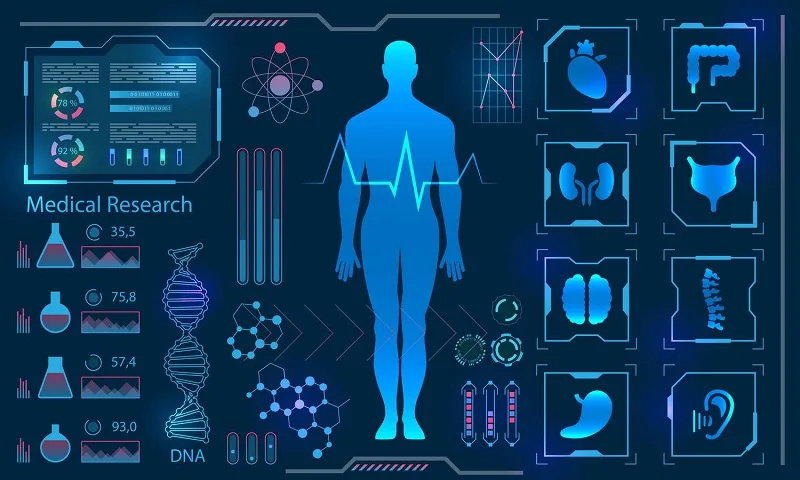
Digital Twins: Revolutionising Healthcare Monitoring
Digital twin technology has emerged as a pivotal innovation in healthcare, offering unprecedented insights into patient health and system efficiencies. This article delves into the genesis, application, and future potential of digital twins in medicine.
What Kind of Technology is This, and When Did It Appear?
Originating from the aerospace and automotive industries in the early 2000s, digital twin technology involves creating a virtual model of a physical object, process, or system. This concept was adapted for healthcare over the past decade, spurred by advances in IoT, AI, and big data analytics, to provide personalised medical care and improve health outcomes.
This technology utilises real-time data streams from various sources, such as IoT devices and electronic health records, to construct a dynamic virtual model that evolves with the patient’s health. This approach enables medical professionals to predict health trajectories, optimise treatments, and enhance preventative care strategies.
How Did It Evolve and Reach Its Current Level?
The rapid evolution of digital twin technology in healthcare has been fuelled by continuous advancements in technology and growing healthcare demands. Initially conceptualised for machine maintenance and system simulations, its potential for human health applications became apparent as data processing capabilities expanded.
Significant research and investment have propelled the technology from theoretical frameworks to practical applications, particularly highlighted during the global health crisis of COVID-19. During this period, digital twins were crucial for simulating the spread of the virus and planning healthcare responses.
Collaborations between technology giants and healthcare institutions have further enhanced the sophistication of digital twins, making them more accessible and tailored to address specific medical needs and integrate seamlessly with existing healthcare infrastructures.
Is Digital Twin Technology Already in Use?
Yes, digital twins are currently employed in various healthcare settings to monitor patient health, manage facilities, and streamline operations. They are particularly useful in personalised medicine, allowing for the simulation of health conditions for individual patients to foresee the effects of different treatments.
Hospitals are using digital twins to enhance patient monitoring and predictive care, particularly for chronic diseases such as diabetes and cardiovascular conditions. This technology also supports surgical planning and post-operative care, helping to reduce risks and improve recovery times.
Beyond individual care, digital twins assist in public health management by modelling pandemic outcomes and healthcare responses, which supports more informed decision-making at the policy level.
Furthermore, their use in medical training and simulations helps prepare healthcare professionals for real-life scenarios, improving the educational process and preparedness of medical staff.

How Practical is Digital Twin Technology?
Digital twin technology offers practical benefits across the healthcare sector. It enables detailed health monitoring and predictive analytics, which are crucial for early diagnosis and personalised treatment plans. The ability to simulate different medical scenarios and outcomes helps in crafting more effective and proactive healthcare strategies.
From a financial perspective, the technology reduces the need for physical resources in testing and trials, which can significantly lower healthcare costs while improving care quality. However, integrating digital twins into existing systems poses challenges, including data privacy concerns and the need for substantial initial investment.
The practicality of digital twins is also evident in resource management within healthcare facilities. Predictive modelling can anticipate patient admission rates and resource needs, helping hospitals manage their workload more efficiently.
Despite some hurdles, the continued advancement and integration of digital twin technology in healthcare promise to enhance both patient care and system efficiency significantly.
Where Else Can Digital Twin Technology Be Applied?
The versatility of digital twin technology allows its application in various other sectors such as manufacturing, where it optimises production processes, and urban planning, where it helps model and manage city infrastructures.
In environmental management, digital twins are used to predict environmental impacts and assist in sustainable resource management. They model ecosystems to forecast changes and suggest mitigation strategies, helping preserve natural environments.
Similarly, in the energy sector, digital twins facilitate the monitoring and management of energy systems, enhancing efficiency and promoting sustainable practices by predicting future scenarios and optimising resource distribution.
